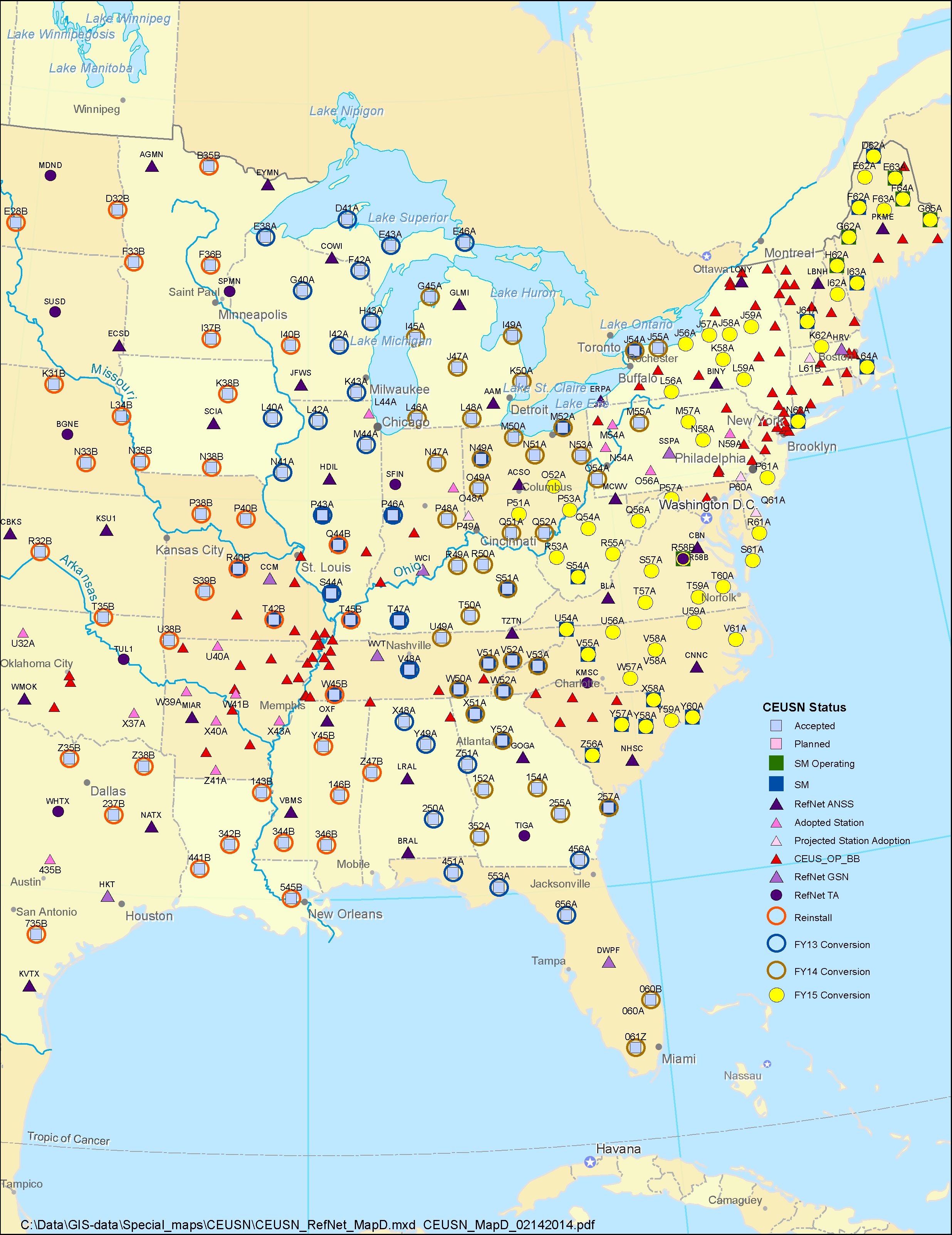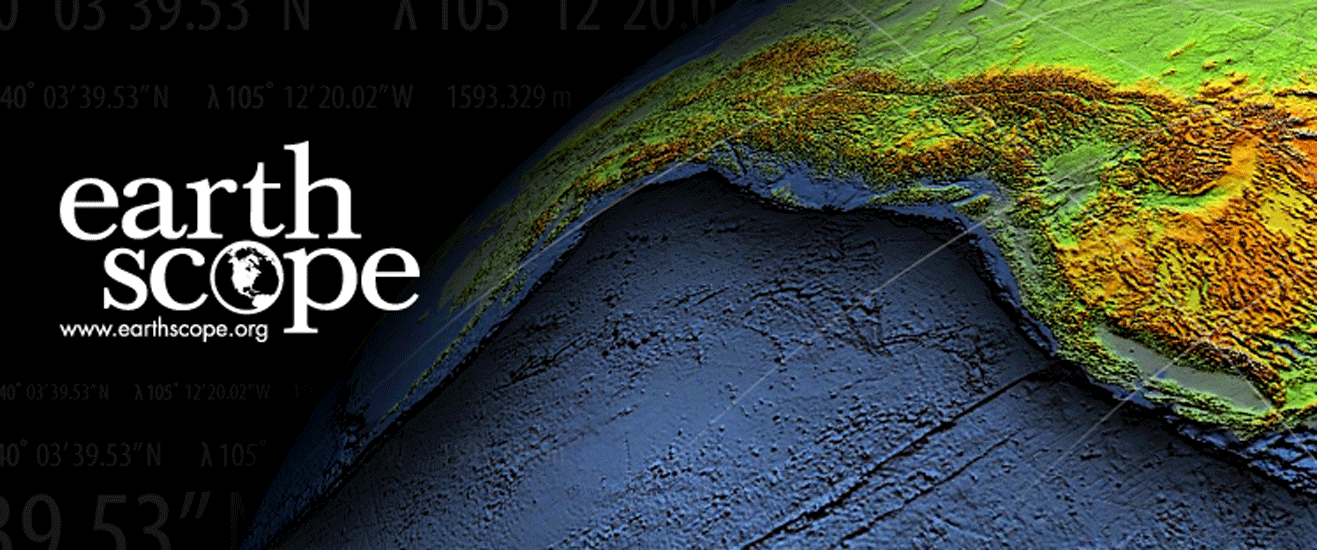By Perle Dorr, IRIS - Spring 2014
The National Science Foundation is funding the creation of a Central and Eastern US Network (CEUSN) for the purpose of obtaining long-term seismic observations. The IRIS-operated portion of the CEUSN will consist of about 160 stations. Most of these stations were originally installed as part of the EarthScope Transportable Array and will be left in place beyond their initial two-year recording period. In a few key locations, where the Transportable Array stations have already been decommissioned, seismometers will be re-installed. When the CEUSN stations are taken together with other contributing stations, there will be over 300 broadband seismometers recording in the central and eastern United States.

The intent of the CEUSN is to provide data critical to address both seismic hazard in the central and eastern United States as well as basic research questions in this region and beyond. CEUSN data will enable researchers and federal agencies to better understand basic geologic questions, background earthquake rates and distributions, seismic hazard potential, and associated societal risks. A committee representing federal, state, and university interests prepared and prioritized a list of stations to be retained that best augment existing facilities and optimize multiple observing objectives. Broadband and strong motion sensors at CEUSN stations will record at 100 samples per second, but will record 200 samples per second if an event is detected. The CEUSN is expected to operate through 2018 or longer. More information can be found on the CEUSN web page www.usarray.org/ceusn.





